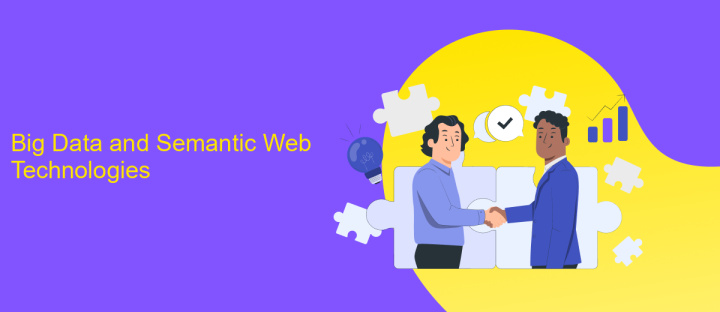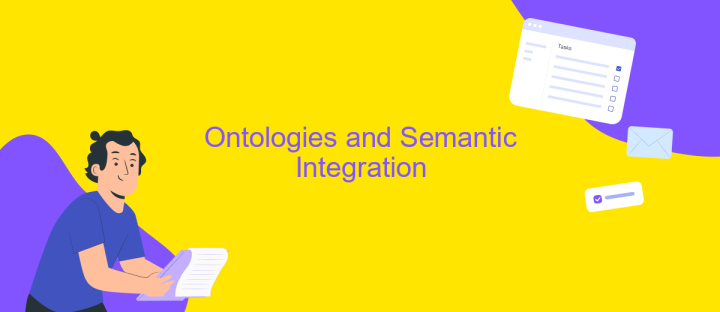Integration of Big Data Using Semantic Web Technologies
The integration of Big Data using Semantic Web technologies represents a transformative approach to managing and analyzing vast amounts of information. By leveraging ontologies, linked data, and intelligent data processing, organizations can achieve enhanced interoperability, improved data quality, and more insightful analytics. This article explores the key methodologies and benefits of combining Big Data with Semantic Web technologies to unlock new potentials in data-driven decision-making.
Introduction
The integration of Big Data using Semantic Web technologies represents a significant advancement in the field of data management and analytics. As the volume, variety, and velocity of data continue to grow, traditional methods of data processing are becoming inadequate. Semantic Web technologies offer a promising solution by enabling more efficient data integration, interoperability, and meaningful data interpretation.
- Enhanced data interoperability through standardized ontologies and vocabularies
- Improved data quality and consistency with semantic annotations
- Facilitation of complex queries and data discovery using linked data principles
By leveraging these technologies, organizations can unlock the full potential of their data assets, leading to better decision-making and more innovative applications. This approach not only addresses the challenges posed by Big Data but also paves the way for more intelligent and automated systems. As we delve deeper into the integration of Big Data with Semantic Web technologies, it becomes clear that this synergy holds the key to the future of data-driven insights.
Big Data and Semantic Web Technologies

Big Data has revolutionized the way organizations handle vast amounts of information, enabling them to gain valuable insights and make data-driven decisions. However, the complexity and volume of Big Data present significant challenges in terms of integration and management. This is where Semantic Web Technologies come into play, offering a robust framework for data interoperability and knowledge representation. By leveraging ontologies, RDF (Resource Description Framework), and SPARQL (SPARQL Protocol and RDF Query Language), Semantic Web Technologies facilitate the seamless integration of heterogeneous data sources, ensuring that data is both machine-readable and human-understandable.
One practical approach to integrating Big Data with Semantic Web Technologies is through the use of specialized services like ApiX-Drive. ApiX-Drive simplifies the integration process by providing a platform that connects various applications and data sources without requiring extensive coding knowledge. It supports a wide range of connectors and allows for automated data synchronization, ensuring that data flows smoothly between systems. By utilizing such integration services, organizations can effectively harness the power of Big Data and Semantic Web Technologies, driving innovation and efficiency in their operations.
Ontologies and Semantic Integration

Ontologies play a crucial role in the semantic integration of Big Data by providing a structured framework for data representation, enabling machines to understand and process information effectively. They facilitate interoperability between heterogeneous data sources, ensuring that data from different origins can be combined and analyzed cohesively. By defining a common vocabulary and relationships between concepts, ontologies help in resolving semantic conflicts and enhancing data quality.
- Standardization: Ontologies offer a standardized way to describe data, promoting consistency and reducing ambiguity.
- Interoperability: They enable seamless integration of data from diverse sources, supporting comprehensive analysis and insights.
- Enhanced Search: Ontologies improve search capabilities by allowing more precise and context-aware queries.
- Data Enrichment: They facilitate the enrichment of datasets by linking related information, providing a more holistic view.
By leveraging semantic web technologies, organizations can unlock the full potential of Big Data. Ontologies not only streamline data integration processes but also enhance data usability, driving more informed decision-making and fostering innovation. This semantic approach ensures that data remains meaningful and accessible across various platforms and applications.
Linked Data and Big Data Management

Linked Data and Big Data management are two crucial aspects of modern data science, each addressing different but complementary challenges. Linked Data focuses on creating a web of interconnected data, enabling seamless data integration and retrieval across diverse sources. Big Data management, on the other hand, deals with the storage, processing, and analysis of vast amounts of data generated at high velocity.
By combining Linked Data principles with Big Data technologies, organizations can unlock new insights and efficiencies. This integration allows for more sophisticated data analysis, improved data quality, and enhanced decision-making processes. The synergy between these two paradigms is particularly beneficial in complex domains such as healthcare, finance, and smart cities.
- Enhanced data interoperability and integration
- Improved data quality and consistency
- Scalable data storage and processing solutions
- Advanced analytics and machine learning capabilities
In conclusion, the integration of Linked Data and Big Data management offers a powerful approach to handle the complexities of modern data ecosystems. By leveraging the strengths of both paradigms, organizations can achieve more robust, scalable, and insightful data solutions, ultimately driving innovation and value creation.
Big Data Analytics with Semantic Web Technologies
Big Data analytics, when combined with Semantic Web technologies, offers a potent approach to managing and interpreting vast amounts of data. Semantic Web technologies, such as RDF (Resource Description Framework) and OWL (Web Ontology Language), enable the structuring and linking of data in a manner that enhances its accessibility and usability. By leveraging these technologies, businesses can create more meaningful connections between disparate data sources, facilitating more comprehensive and accurate data analysis.
One of the key advantages of integrating Big Data with Semantic Web technologies is the ability to automate and streamline data integration processes. Services like ApiX-Drive can be instrumental in this regard, providing seamless integration between various data sources and applications. ApiX-Drive allows users to set up automated workflows that can transfer and transform data across different platforms, ensuring that the data is consistently up-to-date and readily available for analysis. This integration not only saves time but also reduces the potential for human error, thereby enhancing the overall quality and reliability of Big Data analytics.
FAQ
What is the role of Semantic Web technologies in Big Data integration?
How do ontologies assist in Big Data integration?
What are the main challenges in integrating Big Data using Semantic Web technologies?
How can automation tools assist in the integration of Big Data using Semantic Web technologies?
What are some best practices for integrating Big Data using Semantic Web technologies?
Apix-Drive will help optimize business processes, save you from a lot of routine tasks and unnecessary costs for automation, attracting additional specialists. Try setting up a free test connection with ApiX-Drive and see for yourself. Now you have to think about where to invest the freed time and money!

